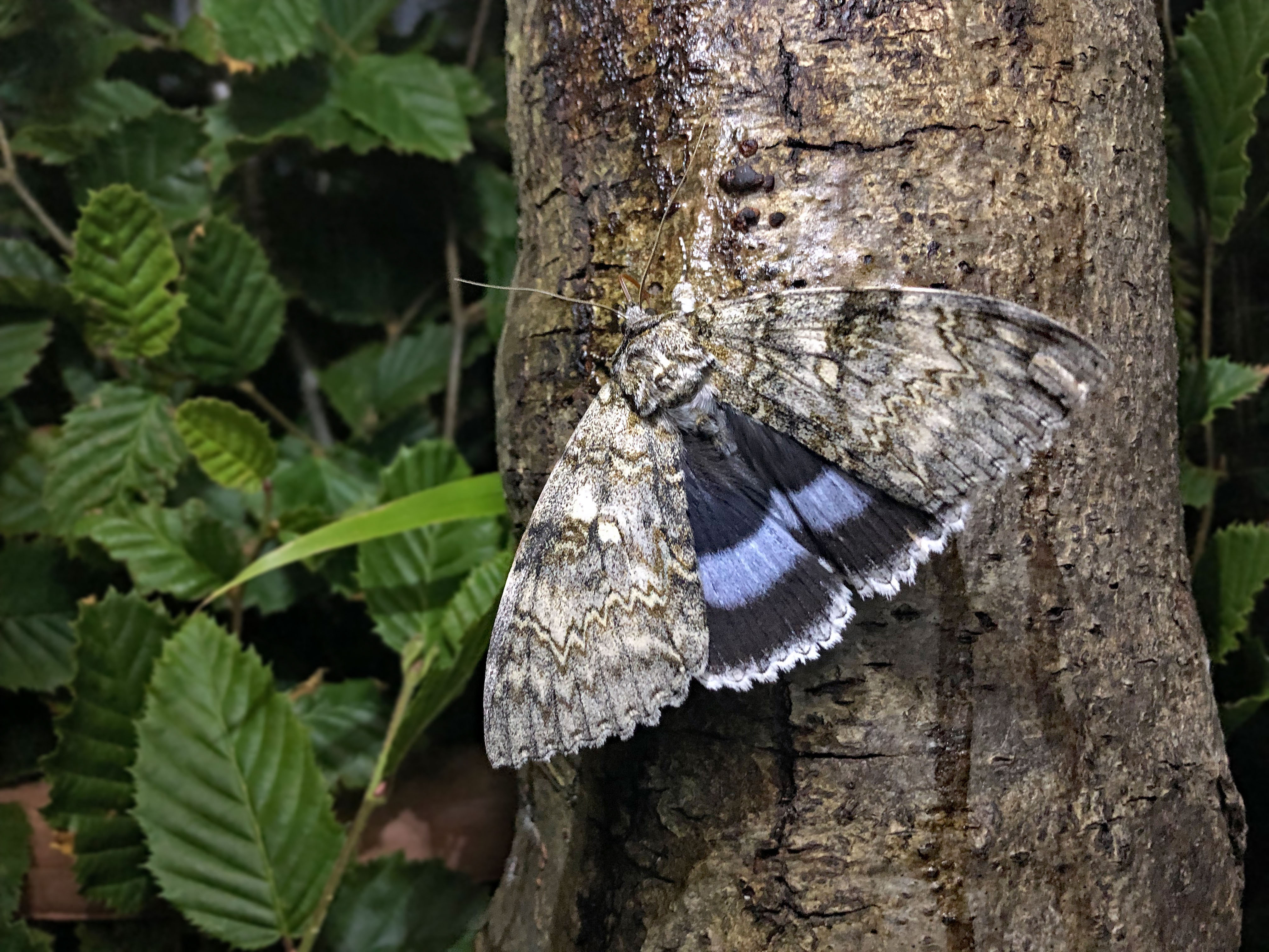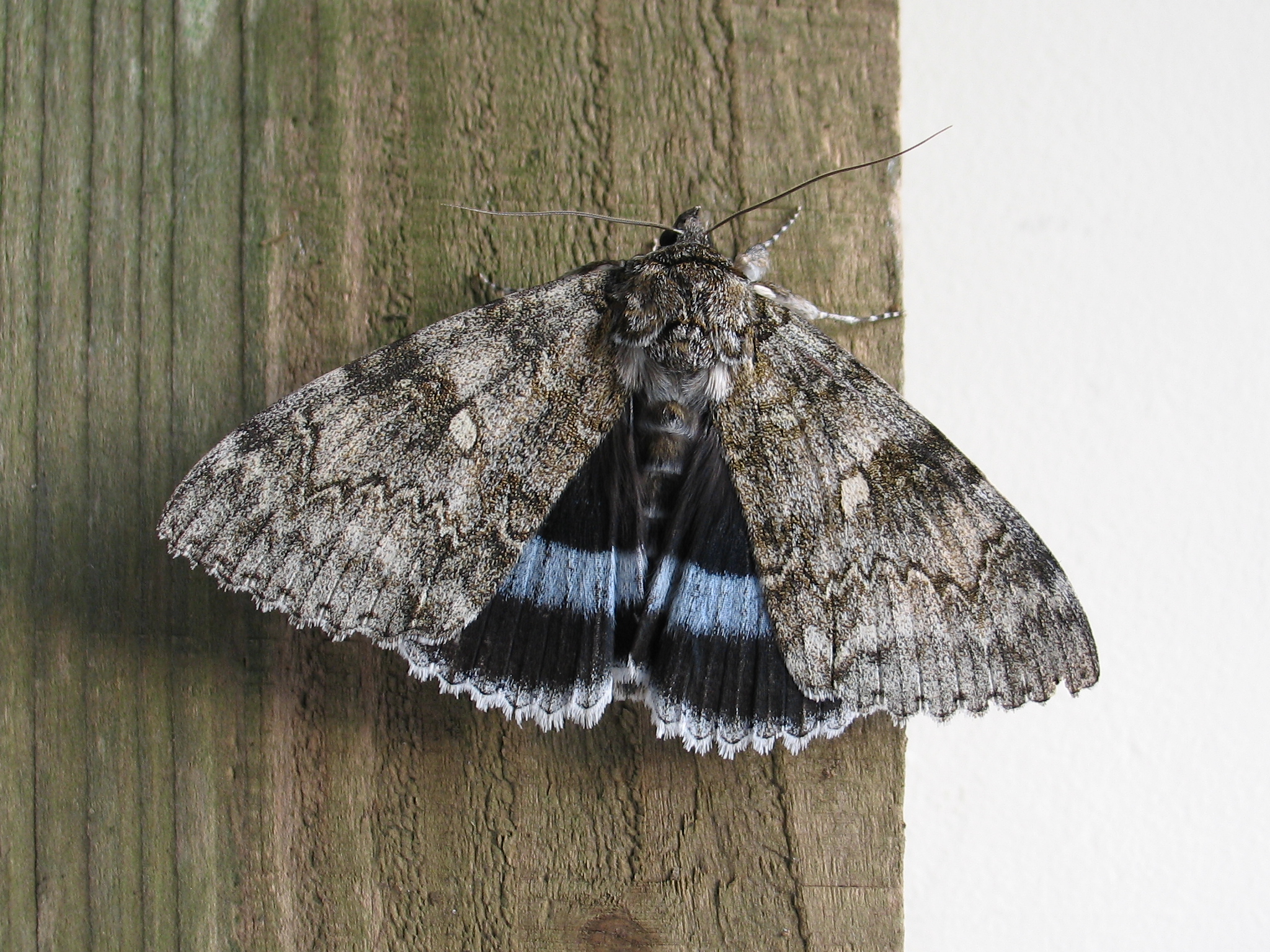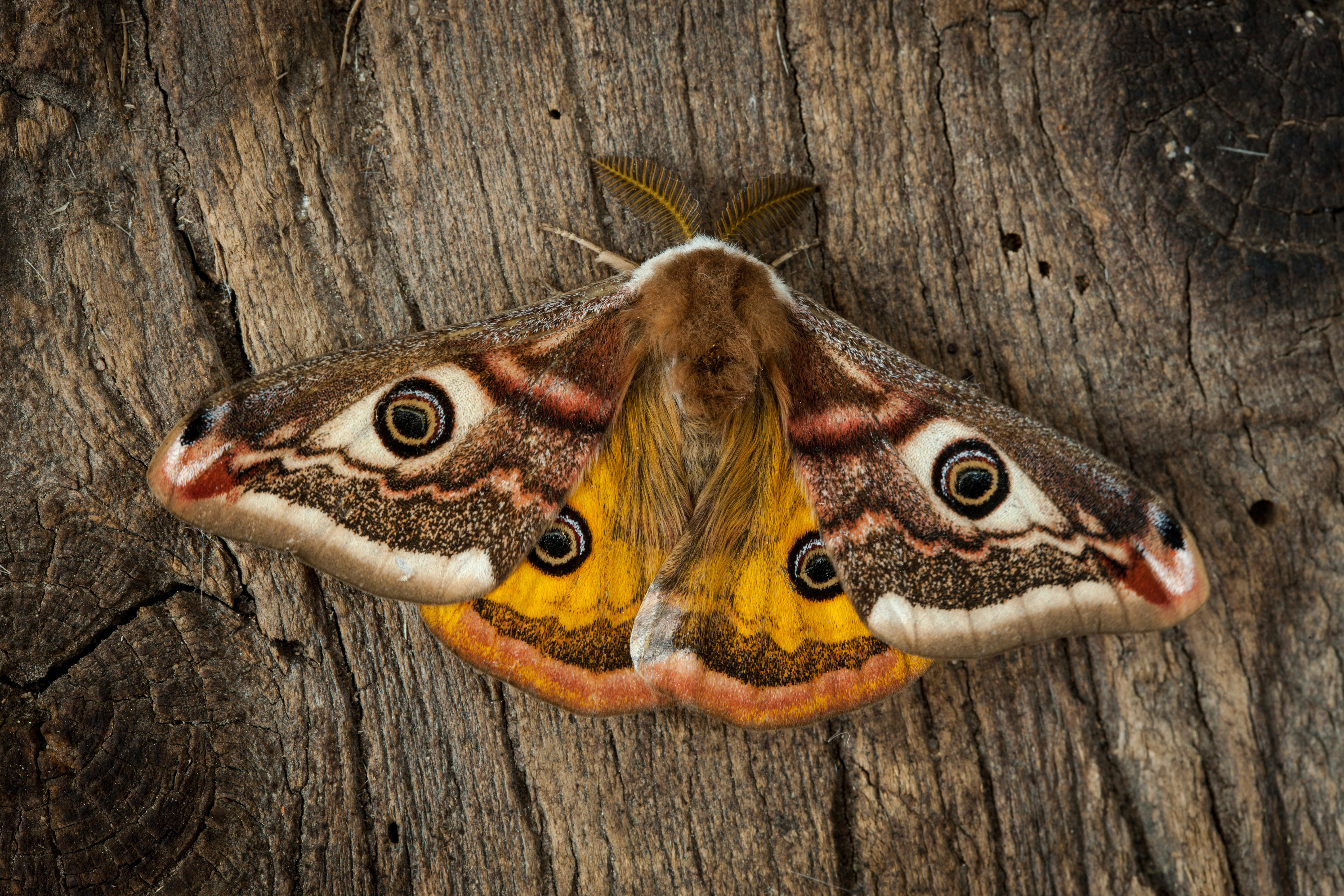'Extinct' moth returns to Britain after forty years
The Clifden Nonpareil, whose resident population disappeared in the 1960s, had only been occasionally spotted in the UK when European moths made their way across the Channel — but now the insect is once again breeding on British shores.


A moth that had become extinct in the UK more than forty years ago has made a comeback. The Clifden Nonpareil, whose name means 'unrivalled' or 'unmatched', has been spotted at several locations across the country and conservationists think it may be breeding across southern Britain.
In the past, only a few of these large moths, which have a wingspan of more than four inches and a blue stripe across their black hindwings, made their way each year from Continental Europe, so much so that the species became regarded as something of a ‘Holy Grail’ among enthusiasts.
But, this year, the insect ‘is turning up all over southern Britain, in the Midlands, East Anglia and Wales, in Ceredigion and Monmouthshire, as well as in south coast counties,’ says Richard Fox, associate director of recording and research at Butterfly Conservation. ‘The Clifden Nonpareil is a fantastic addition to our wildlife, and it is great to know that it is resident again in the UK, after an absence of 40 years or so.'
Butterfly Conservation, together with the Centre for Ecology & Hydrology and Atropos, a journal for butterfly, moth and dragonfly enthusiasts, runs an annual Moth Night event in which members of the public survey moths and record their sightings online. Now in its 20th year, the event, whose 2019 edition started yesterday and runs until Saturday, September 28, has seen a massive rise in Clifden Nonpareil reportings.
‘When we started Moth Night 20 years ago, this moth was a very rare immigrant but it is now becoming familiar to enthusiasts across southern Britain. This illustrates just how quickly change can take place,’ says Moth Night founder and Atropos editor Mark Tunmore.
‘Already, this year, we have received reports to our migrant insect news service, Flight Arrivals, of Clifden Nonpareil sightings from Cornwall, Devon, Sussex, Warwickshire, Suffolk, Dorset, Kent, Norfolk, Somerset and Northamptonshire.’ Some of these insects are likely to be European immigrants but some are part of the recently re-established resident populations.

The end of September is peak Clifden Nonpareil season, so now is the best time to go out and try to spot it and Atropos, Butterfly Conservation and the Centre for Ecology & Hydrology are all encouraging people to take part in Moth Night to help scientists understand how widespread the moth really is across the country. The presence of adult moths, explains Mr Fox, is the best indication of how widely established the Clifden Nonpareil is’ because its caterpillars feed unnoticed up in the canopies of Aspen and poplar trees.' This is why Moth Night is 'a fantastic opportunity to map the current range of this species in Britain,’ says Mr Tunmore.
Sign up for the Country Life Newsletter
Exquisite houses, the beauty of Nature, and how to get the most from your life, straight to your inbox.
But the blue-backed insect is not the only moth worth looking for. Another interesting European arrival is the Convolvulus Hawk-moth, one of the continent's largest moths, which has an unusually long ‘tongue’ that allows it to feed on tubular flowers.
'We really want to hear from anyone who has seen a Clifden Nonpareil, Convolvulus Hawk-moth or encountered any exciting migrant moths or even recorded some of the spectacular local species that fly on autumn nights,’ says Mr Fox.
Many moths, adds Dr Marc Botham of the Centre for Ecology & Hydrology, ‘are benefiting from climate change, being able to withstand the increasingly milder weather, in particular over the winter months. Records collected on Moth Night will help contribute to our fantastic wealth of data and help us to see how climate change and other drivers are affecting their populations in the UK.’
For more information on how to take part in Moth Night, visit their website.

A simple guide to identifying British moths
They might not be considered as beguiling and romantic as butterflies, but we should look at moths in a new
Carla must be the only Italian that finds the English weather more congenial than her native country’s sunshine. An antique herself, she became Country Life’s Arts & Antiques editor in 2023 having previously covered, as a freelance journalist, heritage, conservation, history and property stories, for which she won a couple of awards. Her musical taste has never evolved past Puccini and she spends most of her time immersed in any century before the 20th.
-
 Some of the finest landscapes in the North of England with a 12-bedroom home attached
Some of the finest landscapes in the North of England with a 12-bedroom home attachedUpper House in Derbyshire shows why the Kinder landscape was worth fighting for.
By James Fisher
-
 John Sutcliffe — The man, the myth and the paint-naming legend behind Dead Salmon and Elephant's Breath
John Sutcliffe — The man, the myth and the paint-naming legend behind Dead Salmon and Elephant's BreathBy Carla Passino